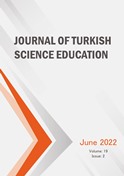Psychometric properties of health literacy measure for adolescents (HELMA) and predictors of health literacy among youth from Malaysia and Sri Lanka
Keywords:
Health literacy, youth, medical students, HELMAAbstract
Health literacy is critical for individual empowerment because it affects how people obtain health information and use it in ways that benefit their health. Healthcare practitioners frequently lack adequate training in health literacy principles. The present study evaluated the psychometric properties of the Health Literacy Measure for Adolescents (HELMA) instrument to assess health literacy and the predictors of health literacy among youth from Malaysia and Sri Lanka studying at a medical institution. Following ethics clearance, students aged between 18–24 years enrolled in semesters I through V were approached. Following informed consent, using
convenience sampling/complete enumeration, i.e., all students were invited to participate. Overall, 315 participants provided complete data. Cronbach’s alpha for the HELMA instrument was 0.74. Based on factor loading, Access, Reading, and self-efficacy were combined under the sub-domain ‘Approach.’ Health literacy was highest in the domain of ‘Numeracy’ followed by ‘Understanding’ and ‘Approach’. Lower health literacy was observed among younger students and those in lower semesters while having a health worker in the family significantly improved health literacy among participants. Our findings support the use of the HELMA instrument to assess
youth health literacy.
Downloads
Downloads
License
Copyright (c) 2022 Journal of Turkish Science Education

This work is licensed under a Creative Commons Attribution 4.0 International License.
